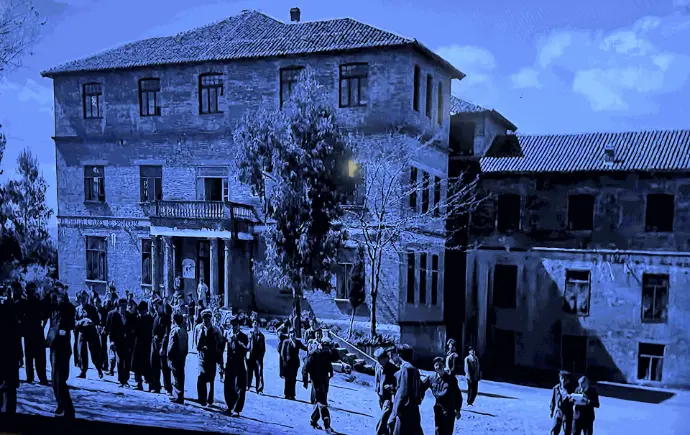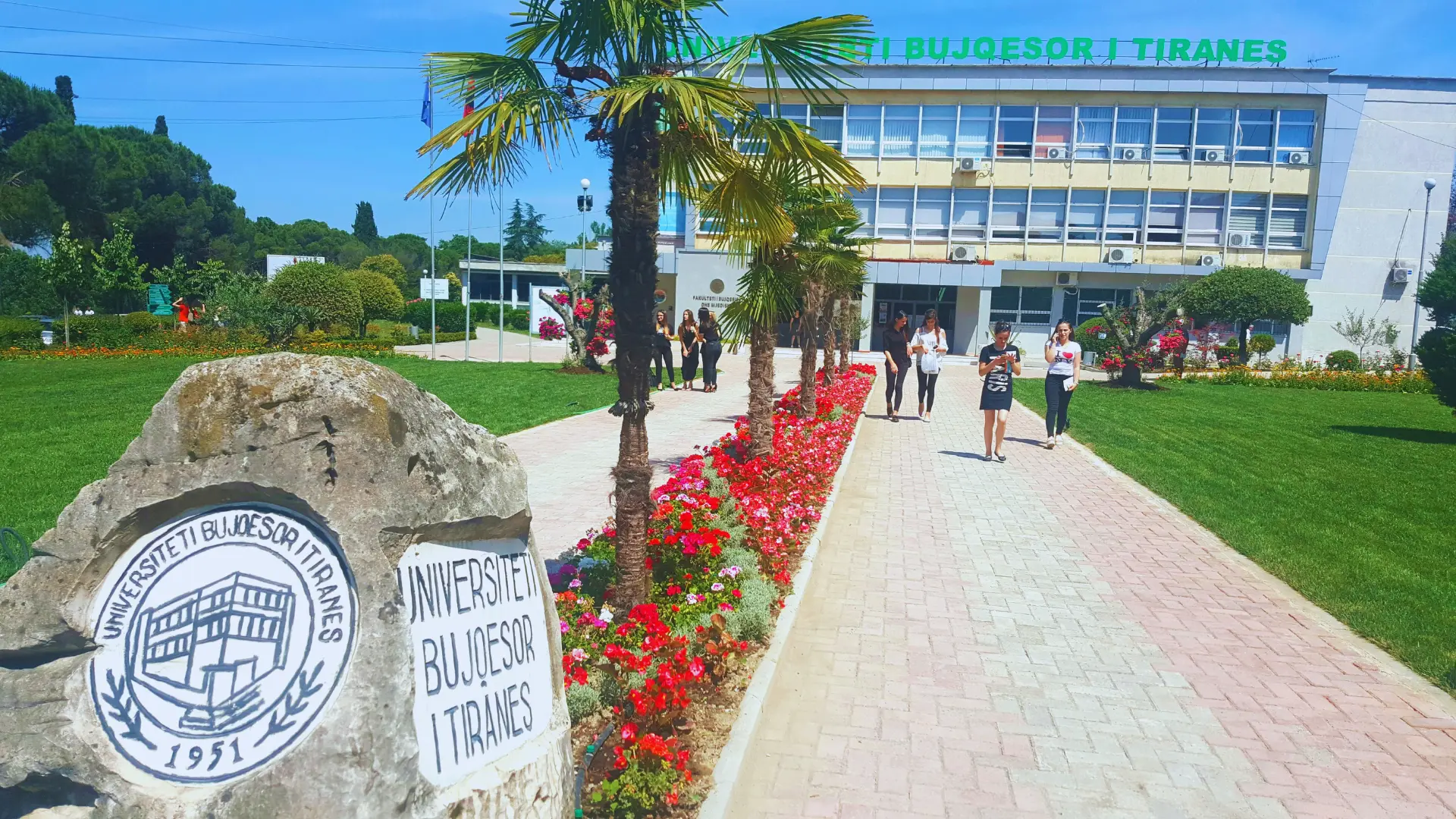History and foundation
The Higher Agricultural Institute (HAI) was established on November 1, 1951, just seven years after the end of the Second World War, at a time when Albania had only recently reasserted its sovereignty—albeit as part of the communist bloc. First lectures on agricultural sciences were delivered at the Faculty of Agronomy in 1951.
The founding of HAI took place during a challenging period, as Albania, a relatively young nation, had been independent for just four decades, having removed itself from the fold of Ottoman Empire and endured the devastation of two world wars.
The establishment of the Higher Agricultural Institute (HAI), today referred to as the Agricultural University of Tirana (UBT), aligned with the state-oriented policies adopted by many post-war European countries to boost agricultural production in response to widespread poverty and hunger. The journey of HAI—along with that of higher education in Albania—can be traced back to Laprakë, seventy years ago. Five years later, in 1956, the institute moved to Kodër-Kamëz, an area then covered in oak forests and meadows that surrounded Tirana at the time—the very spot where it remains to this day.
The Higher Agricultural Institute was established during a time when Albania was mired in backwardness and misery, trapped in a medieval state of existence that most European countries had overcome centuries earlier. Under these harsh conditions—exactly 74 years ago—HAI laid its foundations as a beacon of knowledge and hope for hundreds and thousands of young male and female students, and for the many dedicated lecturers who embarked upon a critical mission: to fundamentally reshape the lives and behavior of the rural producer and the urban consumer alike.
Academic development and structure
In 1959, the Faculty of Forestry Sciences was added to the Faculty of Agronomy and Veterinary Medicine, thus structuring the Higher Agricultural Institute as a university to be administered at the Rectorate level. Thanks to its remarkable academic staff—most of whom brought with them “knowledge and hope from Europe”—and thanks to their passion and unwavering professionalism, HAI has continuously contributed by training, year upon year, generations of quite capable specialists, who have served both as architects of change and modernization in the fields of agriculture and food. This institution has the words of Naim Frashëri engraved on one of the façades of its lecture halls “and the light of knowledge shall shine our path forward,” thus remaining throughout its 74 years of existence faithfully devoted to its mission of national renaissance.
Years of hard work, dedication, and perspiration shed in libraries and lecture halls, study rooms, laboratories, even in agricultural enterprises—transformed the Higher Agricultural Institute (HAI) into an indisputable pillar of Albania’s economic development and social advancement. Thanks to this sustained contribution HAI earned widespread recognition, not only within the region but across Europe and beyond. By the 1980s, HAI graduates were able to pursue doctoral studies throughout the European continent—an achievement also attributed to the fact that ideological influence had not infiltrated yet into the curricula of its agronomy, veterinary, and forestry engineering faculties.
The seed planted in 1951 had sprouted — the sapling had begun to grow and mature into a tree. The Higher Agricultural Institute shaped its identity and secured a prominent place on the international stage. Those who have contributed and continue to contribute are too many — several thousand individuals who have been and still remain the pride of this Institution. Thousands of students, scientists, heads of departments, deans, and rectors laid the bricks one upon another and built the roof of our “Great House” — the Higher Agricultural Institute of Tirana — thus transforming it into a true "Palace of Knowledge and Science," worthy of being called a university. By the 1990s, the HAI had firmly established itself, boasting a consolidated campus comprising four faculties: agronomy, agricultural economics, veterinary medicine, and forestry — with around 6,000 students enrolled and 480 academic staff members.
National and international influence
By the 1990s, the Agricultural University of Tirana inherited the emblem and enduring legacy of HAI on the brink of the “collapse of the Berlin Wall” and just about when the sweeping epochal transformations started reshaping both Europe and Albania.
The contributions of HAI–AUT are inextricably intertwined with the work of thousands of specialists, who played a vital role in the modernization of agriculture and food security, which in turn supported the country’s socio-economic development for several decades. AUT has spearheaded fundamental transformation processes such as land reclamation, soil quality assessment, and nationwide studies on olive groves, vineyards, native flora and fauna, and much more. AUT has provided Albanian agriculture with successful cultivars and hybrids — many of which remain in use today.
The early years of Albania’s transition marked a period of profound restructuring for the Agricultural University of Tirana (AUT), supported by two major projects funded by GTZ (the German Government) and USAID (the United States Government). During the 1990s, a new era of openness began, as AUT professors—and later its students—actively participated in academic capacity-building programs funded by the European Union and partner countries.
Democracy and this wave of openness laid the necessary groundwork for the academic and scientific development of hundreds of lecturers and thousands of students across nearly all EU countries, the United States, and beyond. This collaborative process of building and strengthening mutual bridges has continued intensively, materializing through dozens, even hundreds, of projects financed by the EU and other international donors.
In the years that followed, the Agricultural University of Tirana aligned itself with the European higher education reform processes in accordance with the Bologna Declaration (2001). Over time, AUT has consistently demonstrated leadership—being among the first public universities to achieve program accreditation, thus remaining steadfast in its commitment to raising academic standards.
As a result of international cooperation and the dedication of its academic staff, AUT launched academic programs and scientific research in Environmental Sciences, Natural Resources, and Food Biotechnology. These initiatives have successfully expanded educational opportunities for young people in full line with the ever-evolving trends and labor market demands.
AUT today and the vision for the future
Today, while remaining faithful to its tradition, the Agricultural University of Tirana has expanded its academic and research portfolio—driven by strengthened academic capacities and enhanced laboratory expertise. Its faculties, departments, and academic staff stand among the most reliable partners of the Albanian Government in the drafting and implementation of development programs and strategies. After 74 years, AUT has emerged as a consolidated university, with one of the best campuses and teaching/laboratory infrastructures in Albania. With roughly 6,000 students enrolled and the most highly qualified academic staff in its history, AUT continues to gain ground in the fields of knowledge and scientific research it covers. The university is led by a comprehensive strategic development master plan that extends well beyond the year 2030.
After 74 years, the Agricultural University of Tirana (UBT) has a crystal-clear vision and a well-defined path to fulfilling its mission in strategically vital areas for the country, such as: food security, animal health closely linked to public health, the sustainable management of natural resources (including soil, water, biodiversity, and climate change adaptation), environmental quality, and the development of the agricultural economy.
After 74 years of its existence, AUT has defined clearly it perspective and direction as it is zooming in on 2030. With a forward-looking mission “AUT as a Center of Excellence”—the university is following a well-defined roadmap to achieve its strategic goals, drawing on the guidance and institutional support from the University of Vienna (BOKU).
As of today, graduates of the Agricultural University of Tirana have revitalized rural areas — they produce and export goods and services, welcome visitors and tourists, keep tradition alive and kicking, promote natural resources, and serve as key drivers of sustainable development. AUT alumni have made and continue to make significant contributions within both local and central administrations by making their way up even to the highest leadership positions in the state.
It is difficult to find a corner of the world where a AUT graduate has not left a mark. The sons and daughters, who have graduated from AUT, continue to contribute to hundreds of organizations, institutions, and universities across the globe.
Currently the university has about 6000 students, 5 Faculties and 1 Institute. AUT offers 45 accredited study programmes at BSc, MSc and PhD levels (in 12 BSc, 27 MSc and 6 PhD programmes).
The university has 600 employees, of which more than 300 are Professors or Associate Professors.

